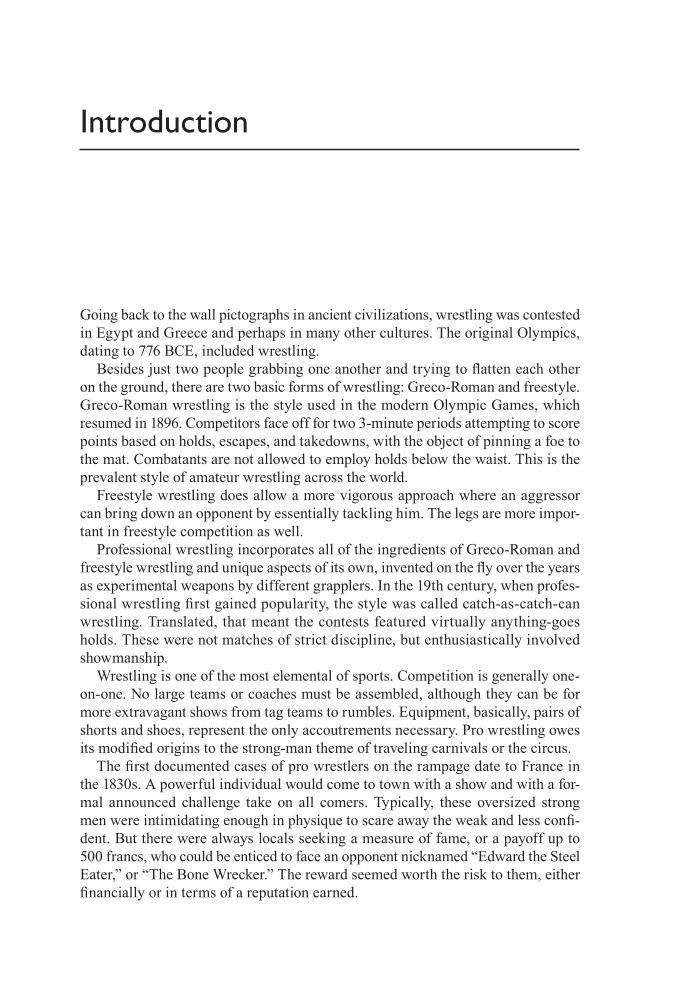Introduction Going back to the wall pictographs in ancient civilizations, wrestling was contested in Egypt and Greece and perhaps in many other cultures. The original Olympics, dating to 776 BCE, included wrestling. Besides just two people grabbing one another and trying to flatten each other on the ground, there are two basic forms of wrestling: Greco-Roman and freestyle. Greco-Roman wrestling is the style used in the modern Olympic Games, which resumed in 1896. Competitors face off for two 3- minute periods attempting to score points based on holds, escapes, and takedowns, with the object of pinning a foe to the mat. Combatants are not allowed to employ holds below the waist. This is the prevalent style of amateur wrestling across the world. Freestyle wrestling does allow a more vigorous approach where an aggressor can bring down an opponent by essentially tackling him. The legs are more impor tant in freestyle competition as well. Professional wrestling incorporates all of the ingredients of Greco-Roman and freestyle wrestling and unique aspects of its own, in ven ted on the fly over the years as experimental weapons by different grapplers. In the 19th century, when profes- sional wrestling first gained popularity, the style was called catch- as- catch-can wrestling. Translated, that meant the contests featured virtually anything-goes holds. These were not matches of strict discipline, but enthusiastically involved showmanship. Wrestling is one of the most elemental of sports. Competition is generally one- on-one. No large teams or coaches must be assembled, although they can be for more extravagant shows from tag teams to rumbles. Equipment, basically, pairs of shorts and shoes, represent the only accoutrements necessary. Pro wrestling owes its modified origins to the strong- man theme of traveling carnivals or the circus. The first documented cases of pro wrestlers on the rampage date to France in the 1830s. A power ful individual would come to town with a show and with a for- mal announced challenge take on all comers. Typically, these oversized strong men were intimidating enough in physique to scare away the weak and less confi- dent. But there were always locals seeking a mea sure of fame, or a payoff up to 500 francs, who could be enticed to face an opponent nicknamed “Edward the Steel Eater,” or “The Bone Wrecker.” The reward seemed worth the risk to them, either financially or in terms of a reputation earned.
Document Details My Account Print multiple pages
Print
You have printed 0 times in the last 24 hours.
Your print count will reset on at .
You may print 0 more time(s) before then.
You may print a maximum of 0 pages at a time.









































































































































































































































































































































